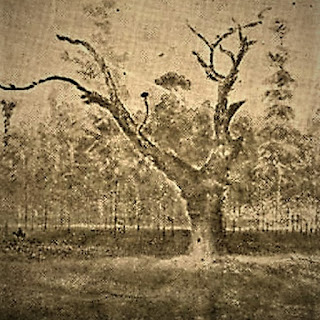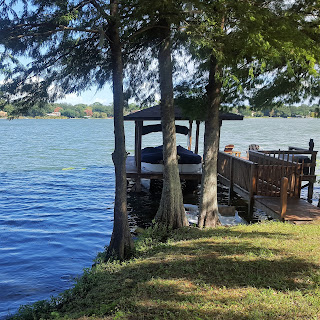Frontierswomen of
Central Florida
A Women’s History Month Tribute
By Richard Lee Cronin and CroninBooks.com
The Lady of Golden Rod, Florida
February
8, 2022
March 1st officially begins our central
Florida celebration of #FrontiersWomen History Month, but today we pay tribute
to a very special lady of Golden Rod, Florida, or as you may prefer,
Goldenrod. Clarissa Yates is deserving mention in both Black History
Month and Women’s History Month. Many amazing female pioneers of 19th
Central Florida were left out of history books, and for that very reason, a
month-long blog, thru to the end of March, will honor 101 truly remarkable
women. Many of the women of this series – pioneers such as Clarissa Yates, you might
well hear about for the first time ever.
In addition to our tribute to women of Central Florida,
3 to 4 being featured each day, we will also feature one local History Museum
each day.
March frontierswomen will be presented in alphabetical
order according to their Maiden name, but with one exception. Today, February
28, 2022, we skip ahead to the letter Y – for Yates, and tell one extraordinary
woman of Golden Road, Miss Clarissa Yates.
See also our featured History Museum later in this post
#Yates of Goldenrod aka
Golden Rod:
Tradition says Goldenrod, a portion of which is
an Orange County community, while the rest is in Seminole County, has its
origin in the 20th century. This named ‘settlement’ however
dates in fact to the 19th century when the entire community was in
Orange County.
A “Golden Rod” Railway depot, (two words), appears
on the 1890 Orange County map. Golden Rod was a stop on the short-lived Orlando,
Winter Park & Oviedo Railroad. And while the name is typically said to
be Goldenrod, one word, the original settlement most always appeared as
two words. The Orlando Sentinel of 5 November 1922, for example, included
a headlined article as, “Golden Rod News.” The article told of personal news of
several “Golden Rod” families.
Florida Agriculturalist newspaper,
of 12 February 1896, announced formation of a “Gabriella, Golden Rod
and Lake Howell Horticultural Association.” And a year earlier, the
same paper told of grower James Edgar of Golden Rod being the Precinct
winner of the South Florida Fair.
Enough though with the name, for the fascinating story
behind the place was this, Golden Rod depot was located on land first conveyed
on 25 August 1882 to a woman named Clarissa Yates.
Clarissa, born 1837 in Georgia according the 1880
census records, homesteaded 149.88 acres on Lake Nan of today, although
in 1890, this very body of water was called Bright Lake. A Widow in 1880,
Clarissa Yates lived with her son, George W. Pettis, 24 years old that
year and likewise a native of Georgia.
1890
Golden Rod (lower left corner)
Clarissa also started selling parcels on her homestead
in 1882. She sold four (4) lots, her buyers being: George Holleman; John
Cummings; Alfred D. LeVesque; and J. P. Magruder. Then, in
1884, Clarissa’s final parcel was sold by: “J. E. Clark, Trustee for Clarissa
Yates and George W. Pettis”.
Alfred D. LeVesque (1858-1884) of Cynthiana, Harrison
County, Kentucky, sold a half-interest in his 40 acres in 1883. Then “on Bright
Lake”, the sale was to Professor N. Frank Smith, also of Cynthiana, Kentucky.
Following the death of Alfred, the professor sued
LeVesque’s estate, a lawsuit that provides a bit of history on the property in
the vicinity of yesteryear’s Golden Rod, or today’s Goldenrod: “It was
represented that there was an orange grove on the land at the time, containing
over 900 fine orange trees, 5,000 nursery trees, 2,000 fine pineapple plants,
one horse worth $175, buggy worth $75, harness tools, etc.” Alfred LeVesque had
claimed the lake was bordered with bananas, but Professor Smith found instead only
four guava bushes. The professor sued for relief, as he had paid LeVesque
$2,000 for 50% ownership of the 40 acres. By 1890, Orange County records indicated
the 40 acres were at that time owned by “N. F. Smith”.
Many Central Floridians, both men and women, were selling
land in the 1880s, but Clarissa’s story is extra-special because of her
- she was of African American descent. Two of her buyers, George Holleman and
John Cummings, were likewise identified as “Black” by the census taker. And as
for Clarissa’s son, George W. Pettis, he was identified in the 1880 census as
“Mulatto.”
Clarissa vanished by the mid-1880s. Even the
whereabouts after the 1880s of her son George Pettis, who also began selling
land in 1880s Central Florida, remains a mystery.
“J. E. Clark Trustee” signed in 1884 for Clarissa and
her son. The founder of Eatonville, Clark’s town of Eatonville is celebrated
today as the first all-black town incorporated in America. Clark had himself
been a former slave turned Orange County merchant.
Joseph Clark not only envisioned an all-Black town he was
also largely responsible for making it happen. His city of Eatonville, formed
in 1887, is about seven miles west of the Clarissa Yates’ homestead of 149 acres,
and she too had been a slave prior to the Civil War.
Clarissa Yates owned 149 Orange County acres in 1881.
She began selling pieces of her land the same year, property which, by 1890, had
a “Golden Rod” depot serviced by the Orlando, Winter Park &
Oviedo Railroad. Throughout the 1890s the name of a community first
homesteaded by Clarissa, shown repeatedly as “Golden Rod”, in 1912, was
expanded by a plat of Goldenrod Heights.
Much of the history of 19th century
Golden Rod, aka Goldenrod, remains a mystery today. The train that once stopped
at Golden Rod depot ended service, and the early historians – well, they neglected
to tell us of one courageous Widow, mother, and former slave - Clarissa Yates.
Perhaps someone will one day add a comment to this
post informing of the rest of her story.
Today’s featured History Museum
Hannibal Square Heritage Center
642
West New England Avenue
Winter
Park, Florida
Open to the public with safety measures in place.
Tuesday–Thursday: 30-minute tours are
available by appointment only 12:30pm, 2pm, & 3:30pm
Friday: Walk-ins from 2:30-5pm
Saturday: Walk-ins from 10am-2pm
Call ahead to verify
hours: 407-539-2680
The Heritage Center hosts the
award-winning Heritage Collection: Photographs and Oral Histories of
West Winter Park, a permanent, museum-quality exhibition of more than
100 framed, archival pieces that capture the lives of Winter Park’s
African-American community spanning the 20th century, and The Hannibal
Square Timeline which documents significant local and national events
in African-American history since the Emancipation Proclamation.
Frontierswomen of Central Florida
A Women’s History Month Tribute
By Richard Lee Cronin, CroninBooks.com
Continues March 1, 2022















